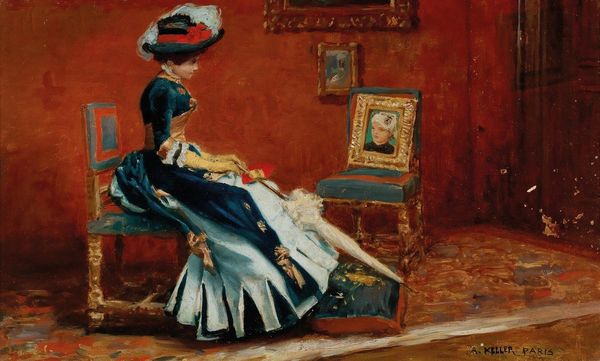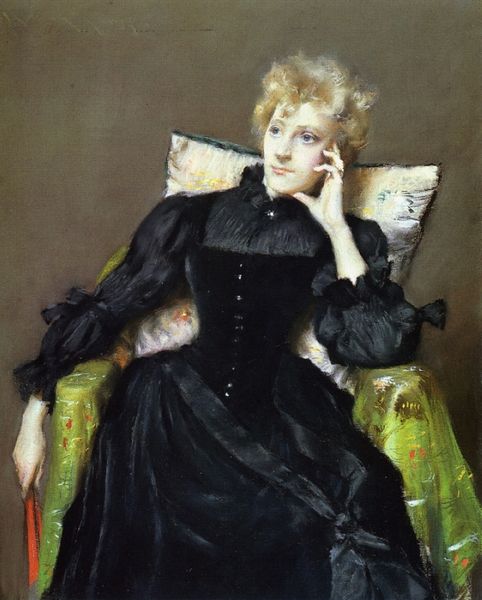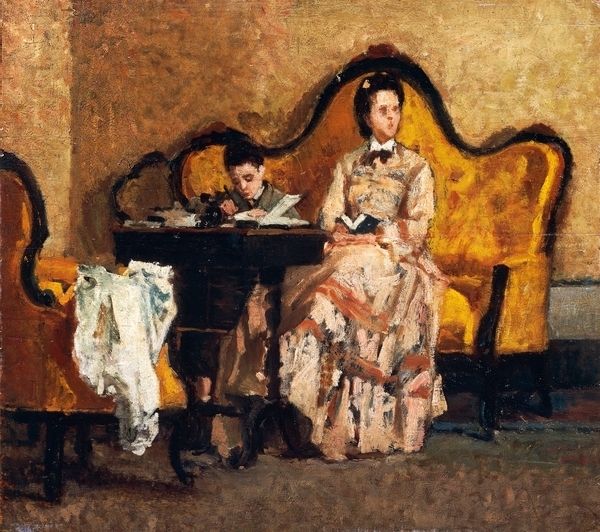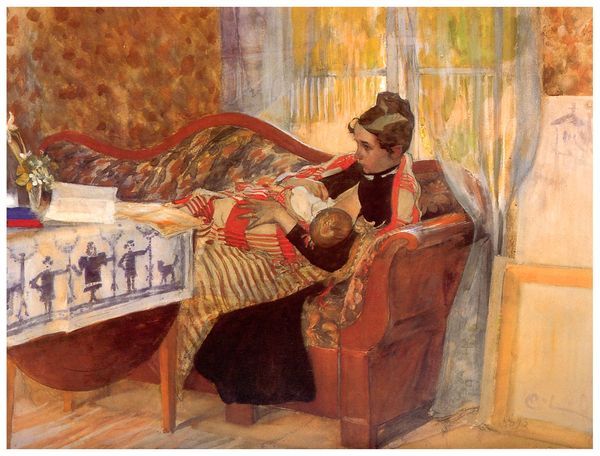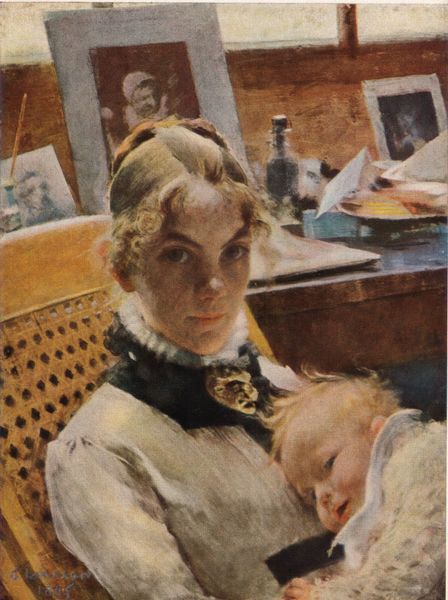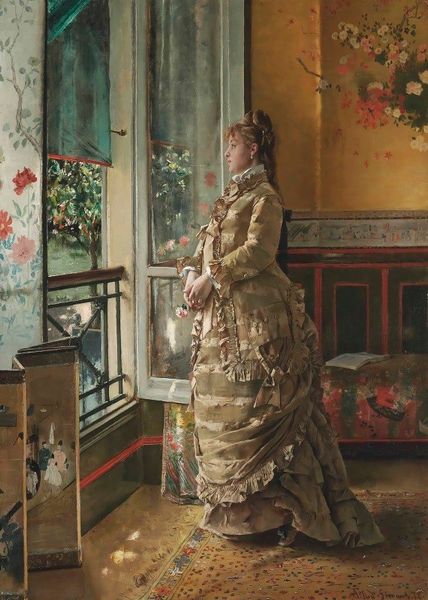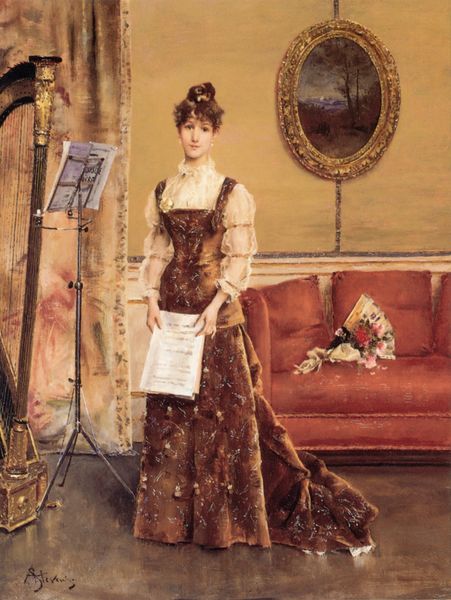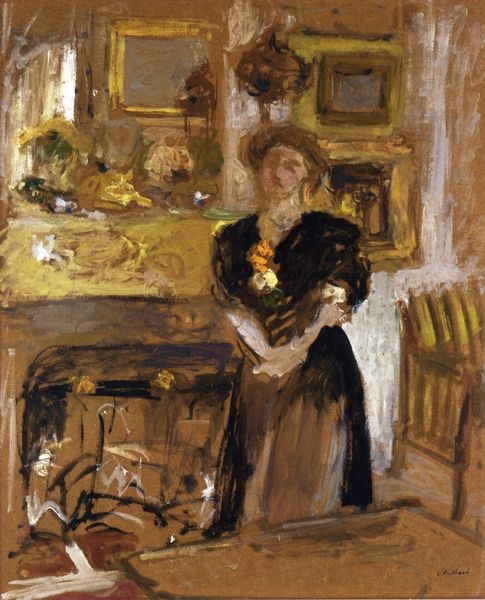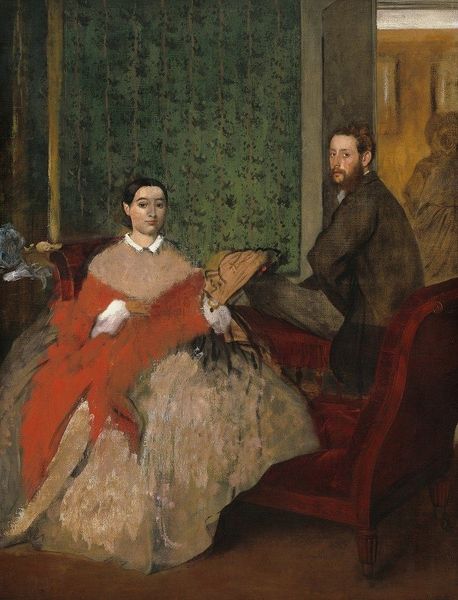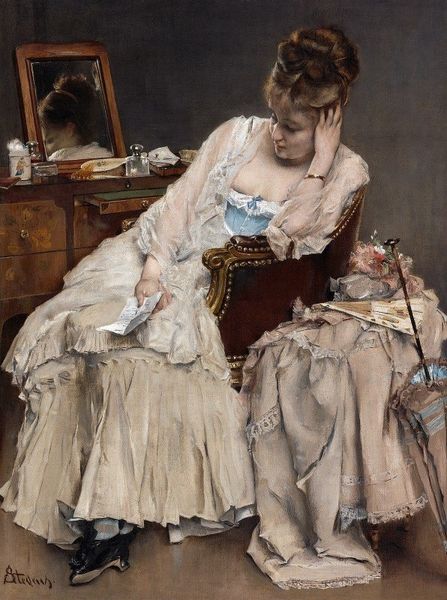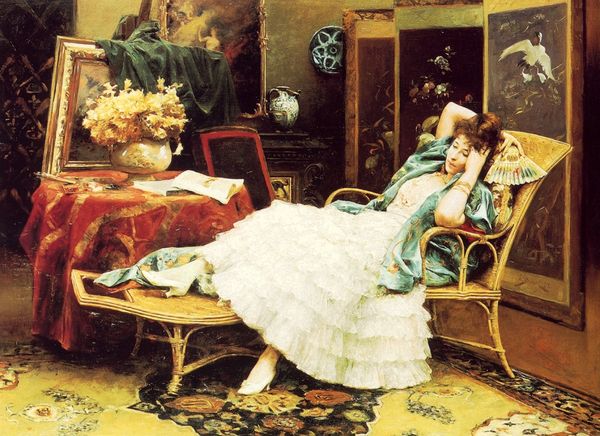
painting, watercolor
#
portrait
#
painting
#
arts-&-crafts-movement
#
oil painting
#
watercolor
#
child
#
intimism
#
art nouveau
#
watercolour illustration
#
genre-painting
Dimensions: 61 x 45 cm
Copyright: Public domain
Curator: What a stunning depiction of domestic life! This is Carl Larsson's "Anna Pettersson," painted in 1895. You can see his distinctive use of watercolor. Editor: My first impression? Intimate, but slightly… staged. The woman in the black dress appears so posed. The scene seems less candid and more intentionally constructed, no? Curator: Well, Larsson was deeply influenced by the Arts and Crafts movement. We can read this piece as reflecting that emphasis on craftsmanship within everyday life. The materials he used – watercolors on paper - elevates the domestic space to an artful setting. Editor: Absolutely, and that placement within the domestic sphere offers so many layers for interpretation. Considering 1895 and its social structures, this is about portraying bourgeois domesticity, but who benefits from it? Are these private spaces empowering, or are they subtly reinforcing prescribed roles for women within the home? The woman looks almost barricaded. Curator: I see your point about power dynamics. And look how he's detailed the textiles, the patterns on the screen, the carving on the chair... this wasn't merely about aesthetics; it was also about the value of labor and the artistry involved in creating these spaces and objects. Editor: I'm also struck by how Larsson positions gender and childhood. The child in red is placed lower in the composition, almost reaching toward the seated mother. Her red dress signals her vitality but also marks the role as innocent child under maternal protection. But the paternal figure stays firmly confined in his realm, seated on his chair, unbothered by this female constellation, literally and metaphorically isolated. Curator: It's worth noting that this piece, like much of Larsson's work, was hugely popular during his lifetime and after. People responded to the depiction of home life as an ideal of comfort and artistry. This resonated particularly with a burgeoning middle class seeking to define their identities through consumerism, taste, and decor. Editor: Yet those idealized visions often mask the complexities of lived experience, no? I think the lasting appeal of pieces like "Anna Pettersson" is in the way that tension plays out – the aspiration toward comfort and beauty, set against a subtly constrained backdrop. Curator: It also demonstrates how much can be revealed when artists value everyday labor and the production processes within their artistic practices. Editor: Precisely. It asks us to unpack the visual grammar of belonging, exclusion, and societal expectation within something as seemingly benign as a domestic scene.
Comments
No comments
Be the first to comment and join the conversation on the ultimate creative platform.

